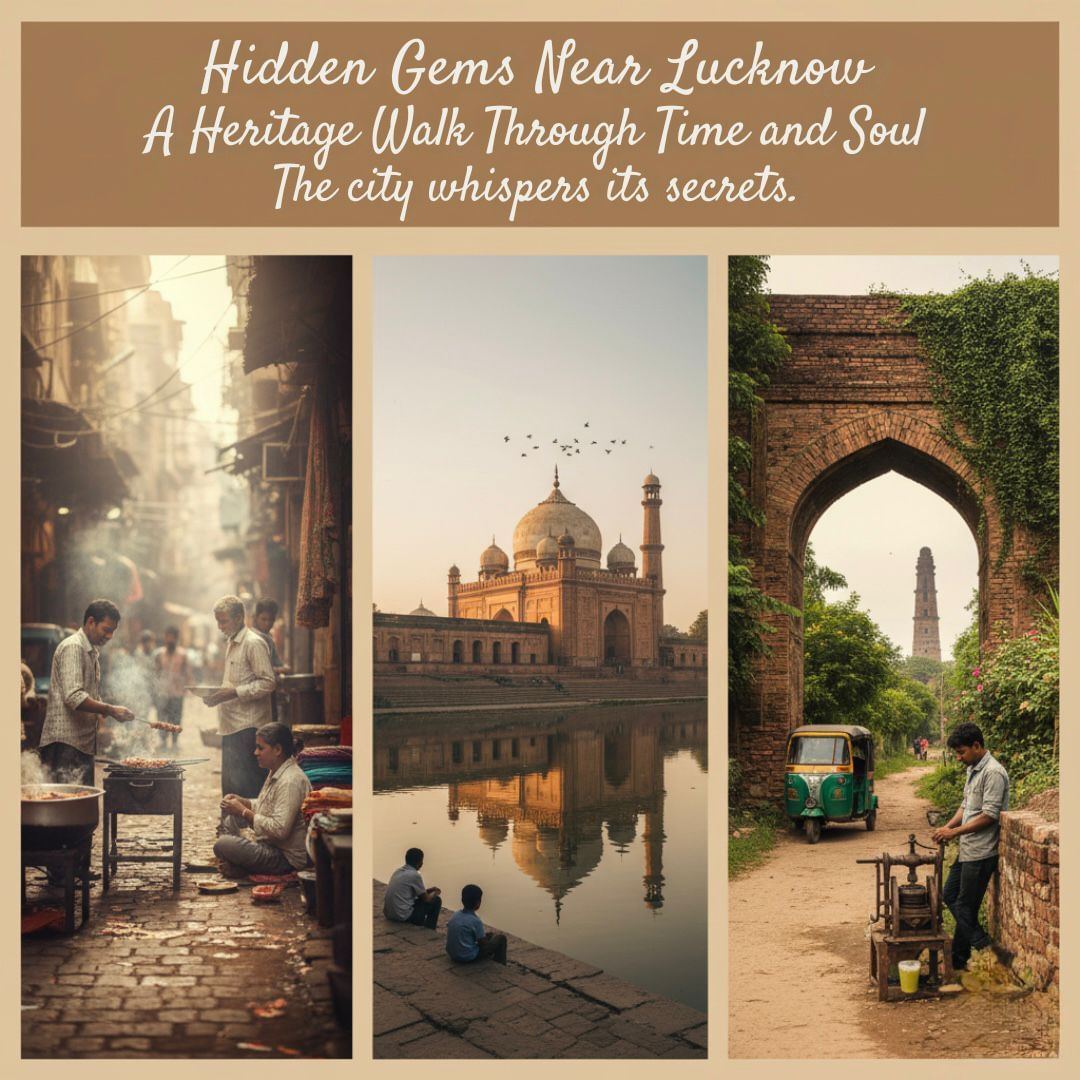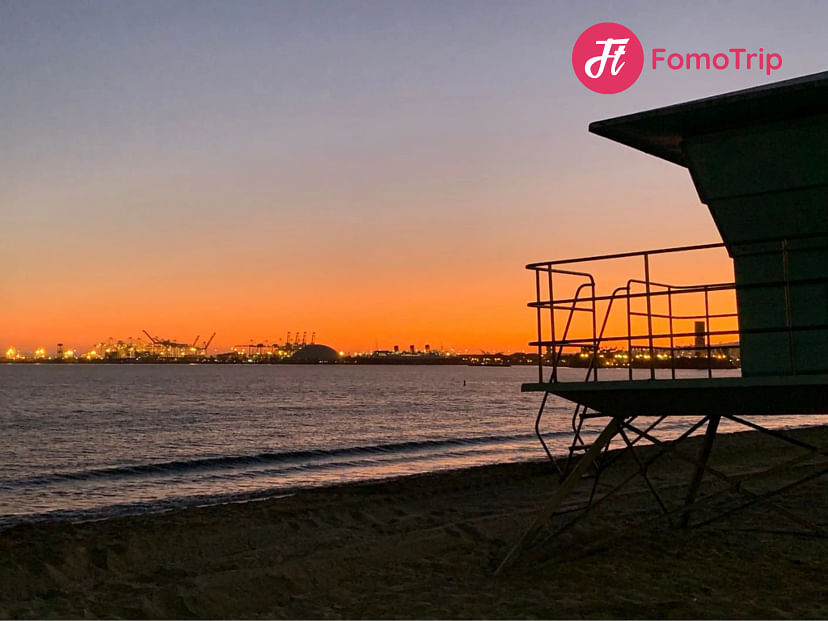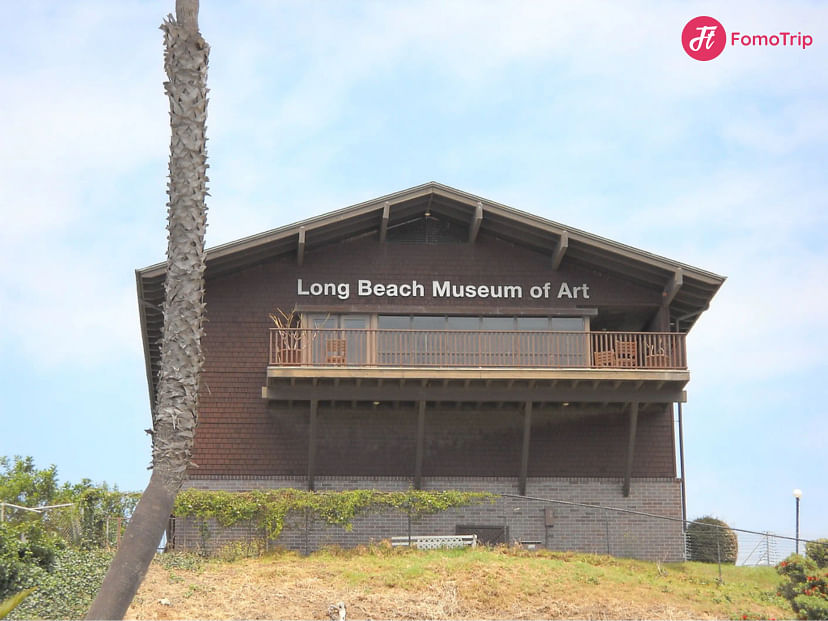Hidden Gems Near Lucknow: A Heritage Walk Through Time and Soul
Prashant
Blogger

Lucknow isn’t just another city you check off your list.
It’s a story you walk through — one that’s been unfolding for centuries.
You don’t explore Lucknow by cab-hopping between monuments. You feel it in its lanes, its food, its silences. The way the air smells of kebabs and nostalgia. The way history hides in plain sight — not locked behind museum glass, but living in everyday life.
This isn’t a guide for sightseeing. It’s a walk — through time, through stories, through the quiet heartbeat of a city that still remembers how to pause.
Part 1: Where Lucknow Hides Its Secrets
Lucknow’s beauty isn’t loud. It whispers.
Most travellers visit for the Bara Imambara, Rumi Darwaza, or Tunday Kababi — and they should. But to see the real Lucknow, you have to wander off the script. Take a turn that doesn’t look touristy. Follow the scent of chai instead of the sound of horns.
Start early, before the streets wake up fully. The first stop — Chowk, the city’s heart.
Chowk is chaos done right. Narrow lanes stitched together with colours, sounds, and smells. You’ll pass a chikan embroidery shop opening shutters, a perfume seller mixing attar in tiny glass bottles, a sweet shop frying jalebis in slow circles.
This is where you stop watching the clock and start feeling the city.
Walk slow. That’s the rule here.
At Gol Darwaza, chikankari artisans sit cross-legged outside their shops, hands moving with impossible precision. If you stop long enough, they’ll tell you stories — how their great-grandparents stitched for Nawabs, how every thread carries pride, not just skill.
That’s the thing about Lucknow. It doesn’t show off its heritage; it just lives it.
Keep walking toward Akbari Gate, and you’ll start noticing how the old blends with the new — scooters zipping past crumbling havelis, street art painted beside ancient brickwork. History here isn’t frozen. It breathes.
And somewhere between the noise and the quiet, you’ll realize: Lucknow doesn’t ask to be seen. It asks to be felt.
Part 2: The Alleys That Remember
The real heritage walk begins when you stop trying to “see everything.”
From Chowk, take the road that winds toward Nakhas — a market that feels like time forgot to move on. Here, you’ll find kite makers cutting coloured paper, wooden block printers hammering away, and spice merchants who’ll let you smell everything before you buy anything.
Then, as you escape the market buzz, you’ll find a sudden calm — Teele Wali Masjid, standing quietly on the banks of the Gomti River.
At sunset, this place glows. The domes catch the light, birds circle overhead, and the reflection of the mosque in the river looks like something out of memory. Sit on the steps for a while. Listen. You’ll hear the sound of prayers mixing with laughter from children nearby. It’s not spectacle — it’s serenity.
Further down the path stands the Husainabad Clock Tower — tall, graceful, and usually overlooked. Most people walk by, take a picture, and leave. But if you stay for a few minutes, you’ll notice how it marks more than time. It’s a reminder of how the British tried to shape the city — and how the city absorbed that, reshaped it, made it its own.
Close by is Satkhanda, the “seven-story” tower that never reached seven. Built by Nawab Mohammed Ali Shah, it stands incomplete, yet strangely perfect. The Nawab dreamed of a Lucknow version of the Leaning Tower of Pisa, but destiny paused construction midway. What’s left is hauntingly beautiful — an unfinished thought carved into the skyline.
And if you keep walking — no rush, no agenda — you’ll find small things the maps forgot to name: a crumbling haveli with floral tiles, a hidden shrine tucked between two shops, a boy selling sugarcane juice beside a 200-year-old wall.
This is where Lucknow feels most alive — not in its grandeur, but in its smallness.
Part 3: The Nawabi Trails — Kaiserbagh, Residency & Dilkusha Kothi
If Chowk is Lucknow’s pulse, Kaiserbagh is its poetry.
Built by Wajid Ali Shah, the last Nawab of Awadh, it once shimmered with marble courtyards, carved arches, and nights filled with music and dance.
Today, the grandeur has quieted — but walk through slowly, and you’ll still hear the echoes.
The Safed Baradari catches the morning sun like silk. The air feels heavier here, almost sacred. Locals say the Nawab hosted mushairas and plays in this very courtyard. You can almost hear the rhythm of ghazals if you let your imagination wander.
A little ahead, Roshan-ud-Daula Kothi and Qaiser Pasand stand half-forgotten, their plaster cracked but their grace unbroken. There’s a strange dignity in decay — a reminder that beauty doesn’t vanish, it just ages differently.
A few kilometres away, the mood shifts.
The British Residency — the site of the 1857 siege — carries a quiet that hums under your skin. People often treat it like a checklist stop, snapping a photo and leaving. But if you linger, it feels almost alive. The bullet marks, the leaning walls, the banyan roots reclaiming the bricks — it’s all memory in motion.
History isn’t loud here. It whispers.
And then there’s Dilkusha Kothi, tucked at the edge of the city.
Built in English Baroque style, it once served as a hunting lodge for the Nawabs. Now, it’s a shell of arches and open sky, wrapped in vines.
It’s oddly beautiful — a ruin that doesn’t beg for attention.
Stand there long enough, and you start imagining the carriages rolling in, the laughter of guests, the rustle of silk.
That’s the thing about Lucknow.
Its silence says more than most cities’ noise.
Part 4: Beyond the City — Kakori, Malihabad & the Outskirts
To really know Lucknow, you have to step outside it.
A few miles out, the city melts into fields, and the air gets softer. The pace slows. The road hums under your feet differently.
Kakori: Where Courage Met Culture
Everyone knows Kakori for its kebabs. But that’s just one side of it.
In 1925, this tiny town became the stage for one of India’s most daring freedom stories — the Kakori Conspiracy.
There’s a stillness here that hides its fierce past. You’ll find murals, memorials, and elders who’ll tell you, almost casually, “Our people changed history here.”
Take a slow walk through its narrow lanes.
Stop at the Shaheed Smarak, touch the names carved in stone, and feel the pride that never faded.
Then grab a plate of Kakori kebabs — soft, smoky, and perfect. Sit outside, maybe under a peepal tree, and let the evening stretch. You’ll realize how history and hunger often meet in the same place.
Malihabad: Mangoes, Poetry & Time Standing Still
Drive further, and you’ll reach Malihabad — the land of Dussehri mangoes and unhurried afternoons.
When it’s mango season, the air itself feels sweeter. Every turn smells like fruit, dust, and sunlight.
But beyond the orchards, Malihabad hides a different treasure — stories.
Old havelis stand half-sunk behind walls, mosques whisper through mango trees, and the locals carry a calm that cities forgot long ago.
If you sit down for chai, someone will bring up Josh Malihabadi, the poet who grew up here. His verses, they’ll tell you, are still recited at dusk.
Walk slowly. Listen to the sound of a handpump somewhere. Notice how every door seems to lead to another time.
Malihabad doesn’t rush to impress.
It invites you to linger.
This — this is where heritage feels human.
Part 5: Reflections — Walking Through Time with Fomotrip
Lucknow isn’t a city frozen in history. It’s one that quietly lives it.
Every arch, every alley still has fingerprints — traces of love, loss, and laughter.
A heritage walk here isn’t about learning facts. It’s about feeling presence.
You walk slower. You look closer. You begin to see how deeply the past sits beside the present — not behind it.
And if you ever find yourself standing in one of those narrow lanes, wondering how to explore deeper — that’s where Fomotrip steps in.
We believe travel shouldn’t just be about where you go, but how you go.
Not rushed. Not rehearsed. Just real.
Fomotrip connects you with the kind of journeys guidebooks miss — walking trails through Kaiserbagh, quiet evenings in Kakori, chai breaks in Malihabad.
Stories you don’t just hear — you live.
Because when you travel this way, you stop being a tourist. You become a listener.
And Lucknow — with all its grace, decay, and soul — has stories worth listening to.
So next time you’re here, don’t just see the city.
Walk it.
Let it unfold.
And somewhere between the kebab smoke and the old marble, you’ll find what every traveller secretly looks for — not just beauty, but belonging.
That’s the kind of journey Fomotrip was built for.





